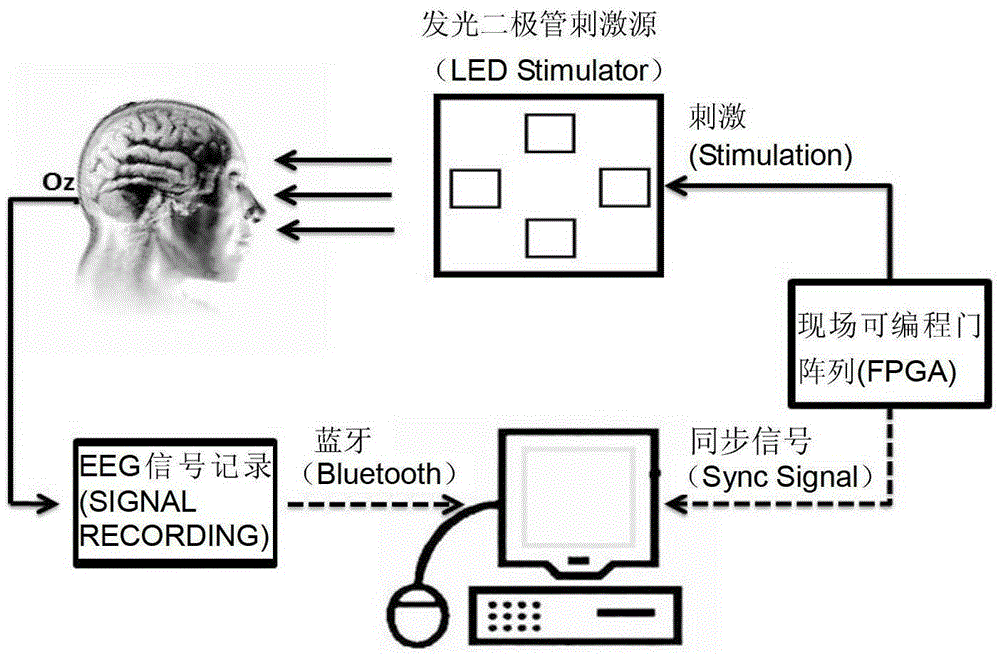Brain-computer interface paradigm based on frequency-variable flicker stimulation
A computer interface and paradigm technology, applied in the field of brain-computer interface, can solve problems such as limited and limited control options, and achieve the effect of high signal-to-noise ratio and high stability
- Summary
- Abstract
- Description
- Claims
- Application Information
AI Technical Summary
Problems solved by technology
Method used
Image
Examples
Embodiment Construction
[0016] A brain-computer interface (BCI) paradigm for visual stimulation based on frequency conversion signal modulation is designed. When a normal person receives a flicker stimulation of a certain frequency (generally greater than 6 Hz), the corresponding brain electricity will have a response consistent with the stimulation frequency or its harmonics. This response is the so-called steady state visual evoked potential (SSVEP). If the stimulation frequency is changed in a specific pattern, the frequency characteristics of its brain electrical signal will also produce a corresponding change pattern. The device design changes the traditional single-frequency visual stimulation mode into a visual stimulation mode modulated by frequency conversion signals, thereby inducing corresponding frequency conversion visual evoked potentials.
[0017] The technical process is: design a new paradigm experiment, set up the EEG signal acquisition device required for the experiment, and then coll...
PUM
 Login to View More
Login to View More Abstract
Description
Claims
Application Information
 Login to View More
Login to View More - R&D
- Intellectual Property
- Life Sciences
- Materials
- Tech Scout
- Unparalleled Data Quality
- Higher Quality Content
- 60% Fewer Hallucinations
Browse by: Latest US Patents, China's latest patents, Technical Efficacy Thesaurus, Application Domain, Technology Topic, Popular Technical Reports.
© 2025 PatSnap. All rights reserved.Legal|Privacy policy|Modern Slavery Act Transparency Statement|Sitemap|About US| Contact US: help@patsnap.com



